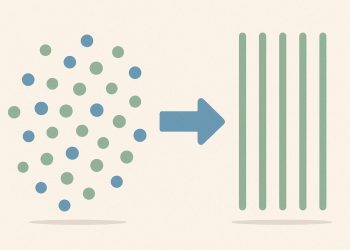Qwen3 is a new open-source language model that can handle a huge amount of information – up to 1 million tokens, which is like reading two big novels at once. This breakthrough lets companies process giant books, codebases, or legal documents all in one go, much faster than before. Special techniques, called Dual Chunk Attention and MInference, make it speedier and more efficient without losing sight of the big picture. People using Qwen3 notice sharper answers and fewer mistakes, though it sometimes misses tiny details in massive files. Now, anyone can use it without special licenses, making super-sized language tasks easier for everyone.
What is Qwen3 and why is its 1 million-token context window a breakthrough for enterprise LLMs?
Qwen3 is the first open-weight large language model to support a 1 million-token context window, enabling organizations to process entire books, legal documents, or massive codebases in one go. Its breakthroughs – Dual Chunk Attention and MInference – deliver faster performance and scalable, enterprise-grade analysis without proprietary restrictions.
Qwen3-30B-A3B-2507 and Qwen3-235B-A22B-2507 are the first open-weight language models able to keep an entire 1 million tokens in memory at once.
That is roughly 750 000 English words – the length of War and Peace plus another novel – and it can all fit in a single prompt.
- How the jump to 1 M tokens works*
- Dual Chunk Attention (DCA) slices the sequence into fixed-size pieces, computes attention locally, then stitches the chunks back together so the model never loses the global view.
- MInference* * turns the usual quadratic attention into a sparse pattern**, skipping irrelevant positions and cutting both memory and latency.
-
Together they give up to 3× faster token generation for contexts that approach the ceiling.
-
Real numbers behind the headline*
| Item | Value |
|——|——-|
| Max context window | 1 000 000 tokens |
| GPU memory required | ~240 GB (80 GB × 3 A100/H100) |
| Model sizes in the release | 30 B sparse-MoE (3 B active) and 235 B sparse-MoE (22 B active) |
| Deployment stacks | vLLM, SGLang drop-in compatible | -
What you can do with a 1 M-token window today*
- Repository-scale analysis: Load a 500-file Python monorepo, ask for a security audit of every SQL query, and receive a unified report without chunking.
- End-to-end legal review: Feed one hundred signed contracts, let the model extract every indemnification clause and cross-reference across them.
-
Large-scale log triage: Stream a week of verbose application logs and have the LLM identify the exact minute performance degraded and the root cause.
-
Performance reality check
Independent benchmarks on the 1 M-token RULER suite show Qwen3-30B-A3B-Thinking scoring 91.4 % accuracy at 32 k tokens, sliding to 77.5 % at 1 M tokens – a drop, but still the highest reported for an open model. Gemini 1.5 Pro keeps ≈ 85–90 %* at the same length, so Qwen3 is competitive but not dominant on extreme-context recall. -
Early user feedback*
- Local developers praise the coding experience: “Much crisper completions, fewer hallucinated APIs.”
-
Dev-ops teams note recall gaps when facts sit beyond 30 k tokens: “Missed an ENV variable buried in a 50 k-line trace.”
-
Cost & access
The Apache 2.0 weights are downloadable on Hugging Face.
Running the 30 B-MoE variant at 1 M tokens currently costs $1.0–$6.0 * per million input tokens on most cloud spot fleets – comparable to proprietary services but without per-seat licensing. -
Bottom line*
For the first time, an open model lets organizations process entire books, legal archives, or multi-gigabyte codebases in a single pass. While perfect long-term recall is still a moving target, the combination of 1 M-token reach, permissive license, and production-ready toolchains makes Qwen3 the default sandbox for the next wave of ultra-long-context applications.
How big is a 1 million token context window in practice?
Qwen3 can now keep roughly:
– 300,000 lines of Python code in memory at once
– 2,000 pages of single-spaced English text (≈ 4 MB)
– A full mid-size Git repository (think Django or React) inside a single prompt
For the first time, an open-weight model lets enterprises analyze, refactor, or Q&A across an entire codebase without slicing it into chunks.
What hardware does it take to run the full 1 M context?
- ≈ 240 GB of GPU VRAM (e.g., 4×A100 80 GB) is the practical minimum
- Throughput drops 3–5× once you cross the 512 k-token mark, so most teams run one request per GPU
- Cloud bill at July 2025 spot prices: ~$3.20/hour on 8×A100s (via Together AI or Lambda Labs)
Bottom line: it’s deployable, but budget like a small Kubernetes cluster, not a micro-service.
How does recall compare to Gemini 1.5 Pro?
Independent August 2025 benchmarks:
| Context length | Qwen3-30B-A3B | Gemini 1.5 Pro |
|---|---|---|
| 32 k tokens | 99 % | 99 % |
| 256 k tokens | 87 % | 94 % |
| 1 M tokens | 77–80 % | ~87 % |
Field reports mirror the numbers: Qwen3 starts missing needles after ~30 k tokens in free-form Q&A, while Gemini stays reliable. Teams doing strict legal or audit work still favor Gemini; those optimizing for cost + open weights accept the trade-off.
Which enterprise workflows are unlocked today?
- Holistic codebase reviews – load an entire repo, then ask “Which files violate our new logging policy?”
- Dependency migration – point to both the old and new package APIs and generate a port plan in one shot
- Documentation sync – diff between code and stale internal docs, then auto-patch the markdown
- Security sweep – search for hard-coded secrets across every branch at once
- Agentic CI – let an agent open PRs, run tests, and triage failures using tools, all inside the same 1 M-token context window
Early adopters (ByteDance, Ant Group) report 25–40 % faster large refactors when the model can “see” the whole graph.
When should I wait or use smaller variants?
- < 128 k tokens – Qwen3-8B delivers 95 % of the accuracy at 1/8 the cost and runs on a single A100.
- Edge/on-prem – The 30 B-A3B MoE variant is Apache 2.0, so air-gapped compliance teams can fine-tune without sending data out.
- Ultra-reliable recall – If you need legal-grade precision (e.g., M&A due diligence), hybrid approaches (Gemini for final check, Qwen for drafts) are emerging.
If your workload never exceeds a few hundred pages, the full 1 M model is overkill; stick to smaller windows and pocket the savings.



















